How estimating emails kill specialty subs
Written by Andy Lee

Every subcontractor is frustrated with email.
Today, subs receive irrelevant ITBs from unknown GCs or out-of-state projects. Even on relevant jobs, it seems there's 5-6 copies of the same email and the entire office is cc'd (chief estimator, estimators, CEO, bid-coordinators).
Jake Whittle, owner of Niehaus (a drywall sub in St. Louis), summarized this problem as
I was getting forwarded the same email 5-6 times a day. That happened every time there was an update or a bid date change or an addendum.
Overloaded inboxes refers to a problem where subcontractors are spending more and more time sifting through noise in their inbox to organize relevant ITBs. This is a problem that is silently killing profits for subcontractors, yet rarely discussed or analyzed. To understand overloaded inboxes, we compiled the world's largest dataset on construction emails to perform the first quantitative analysis on how overloaded inboxes impact revenue and productivity of subcontractors. The goal is to help subcontractors translate gut-feelings of email frustration into exact dollar costs through industry benchmarks for estimating emails.
Specifically, we'll cover these topics.
- The root-cause of overloaded inboxes
- Why most emails are actually irrelevant
- Industry benchmarks for $ impact of overloaded inboxes
- Why existing solutions like excel and hiring bid-admins don't work
- How new technology like automated bid boards solves overloaded-inboxes
🏗️ Section 2: Why Overloaded Inboxes Exist
The root-cause of overloaded inboxes stems from how GCs send bidding emails to subcontractors.
In theory, a GC sends an ITB to 1 estimator or the estimating@ inbox. In this case, 1 person reads 1 email from the customer and email is manageable.
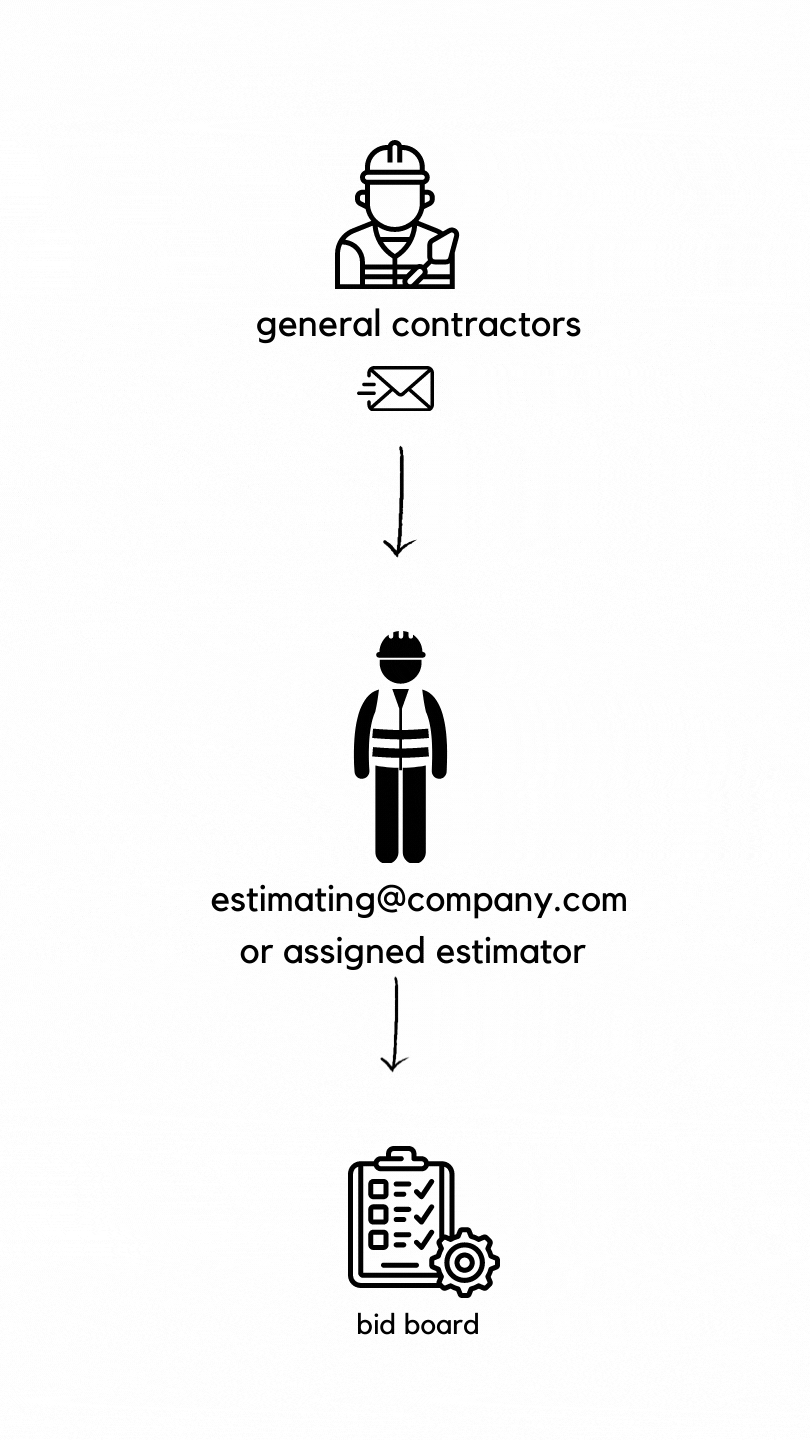 The ideal way that emails get to your bid board
The ideal way that emails get to your bid board
In practice, GCs will cc multiple people on emails because they're worried the right person on the team won't see the email. Furthermore, they'll do this for all updates (addendums, schedule changes, etc). As such, 1 email becomes 5 emails.
 The reality of how emails get to your bid board
The reality of how emails get to your bid board
As GCs adopted bidding platforms like isqft and BuildingConnected, GCs also started to spam subs with bid invites based on some large distribution list. Consequently, subs are left with the burden of sifting through irrelevant emails. In summary, the root-cause of why subcontractors feel overwhelmed with email stems from 3 factors
- GCs cc multiple people on emails
- GCs send multiple types of communications (ITBs, addendums)
- GCs spam subs because it's easy to through bidding platforms
🚅 Section 3: Industry Benchmarks
The problem is subcontractors are unaware of the cost of sifting through overloaded inboxes. To highlight this problem, we compiled the following dataset of estimating emails that commercial subcontractors receive.
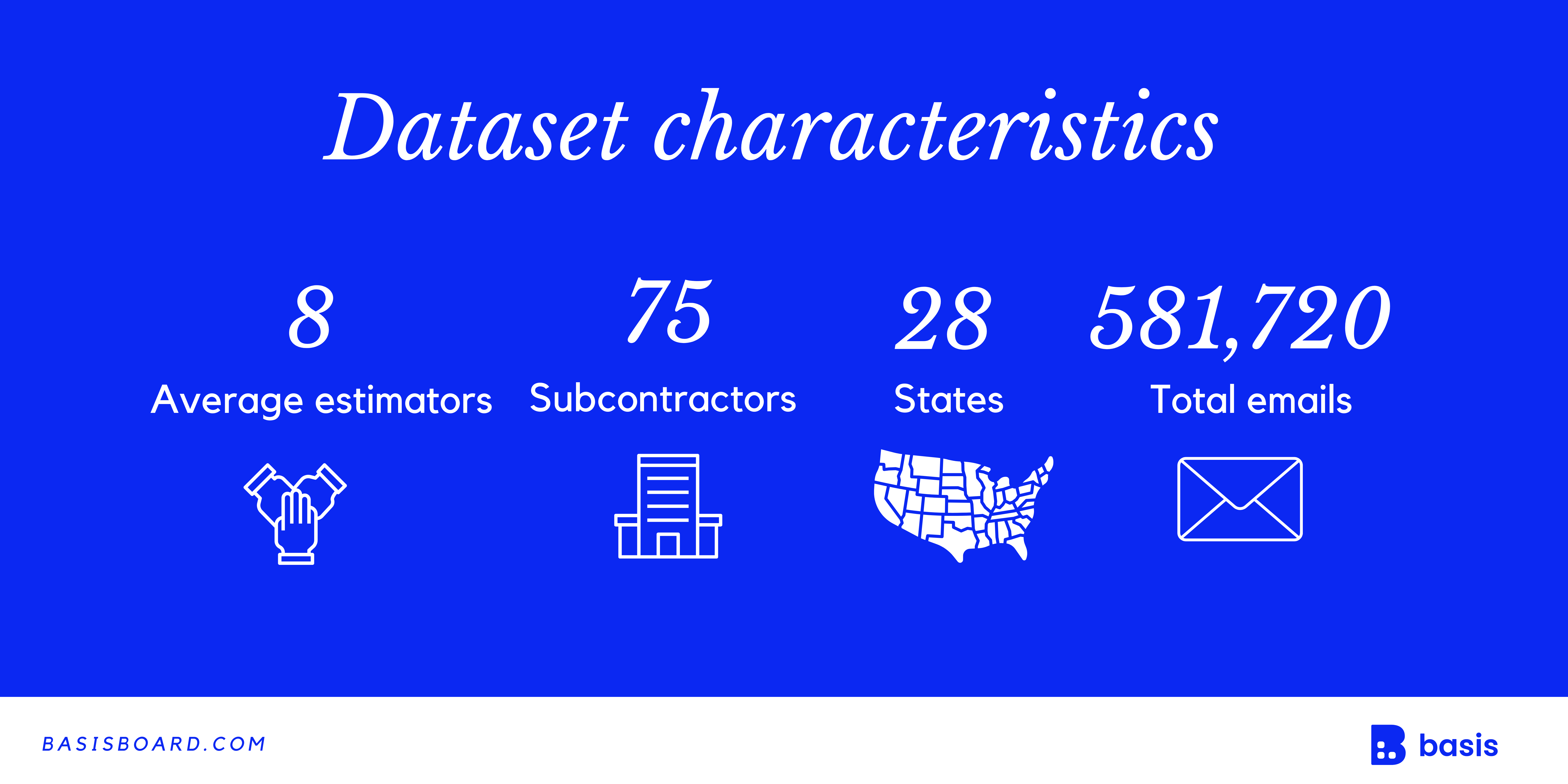
To start, we analyzed average monthly emails received by companies segmented by estimating team size.
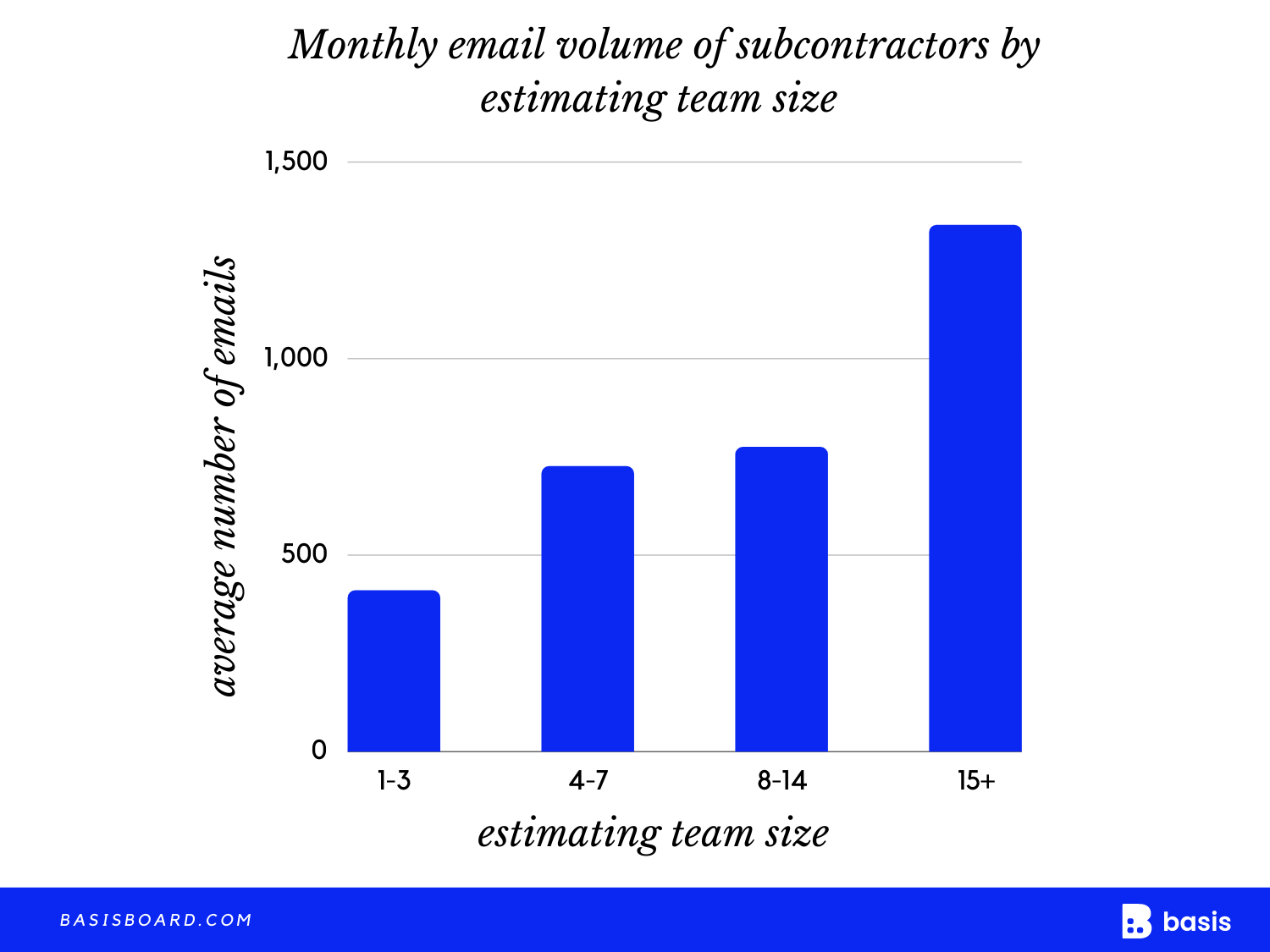
Further, we can break this data down by email-type.

Based on survey results, we estimate that chief estimators spend about 3.5 minutes per email, based on common actions like
- reading and responding to emails
- deleting emails
- adding it to the bid board
- forwarding it to estimators
- downloading it to project folder
For most subcontractors, chief estimators are cc'd on incoming ITBs and addendas because they're responsible for making bid/no-bid decisions as well as keeping a pulse on important updates. Consequently, chief estimators receive most estimating emails, which is surprisingly a massive time sink.

Based on an average team size of 8 estimators 💡Section 4: Insights Subs often complain the majority of emails are irrelevant (i.e. unknown GCs, out-of-state jobs). To understand this, we classified emails into two types: relevant and irrelevant. (See footnote)
- Relevant: Emails linked to jobs a subcontractor actually bid-on
- Irrelevant: All other emails
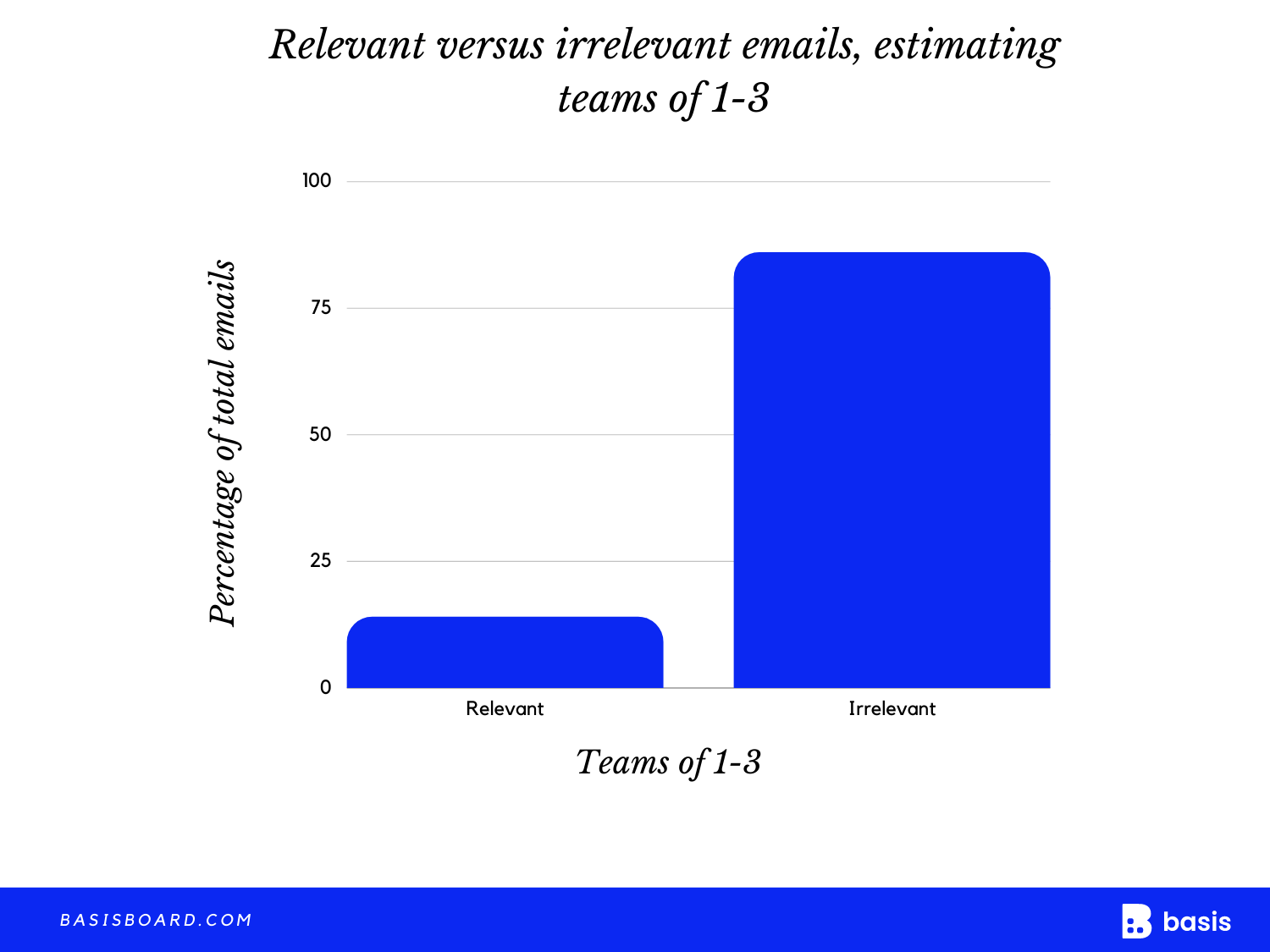
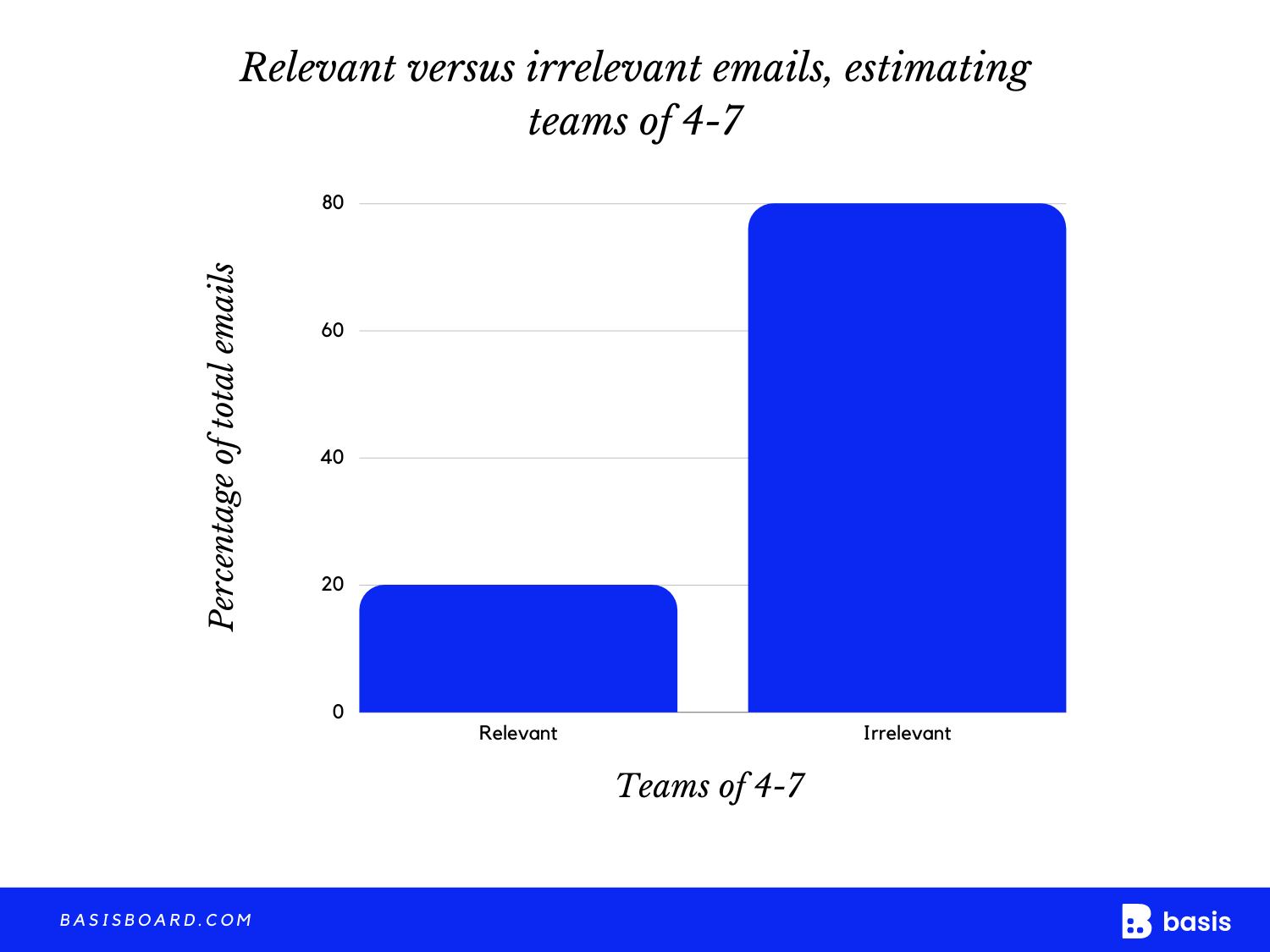

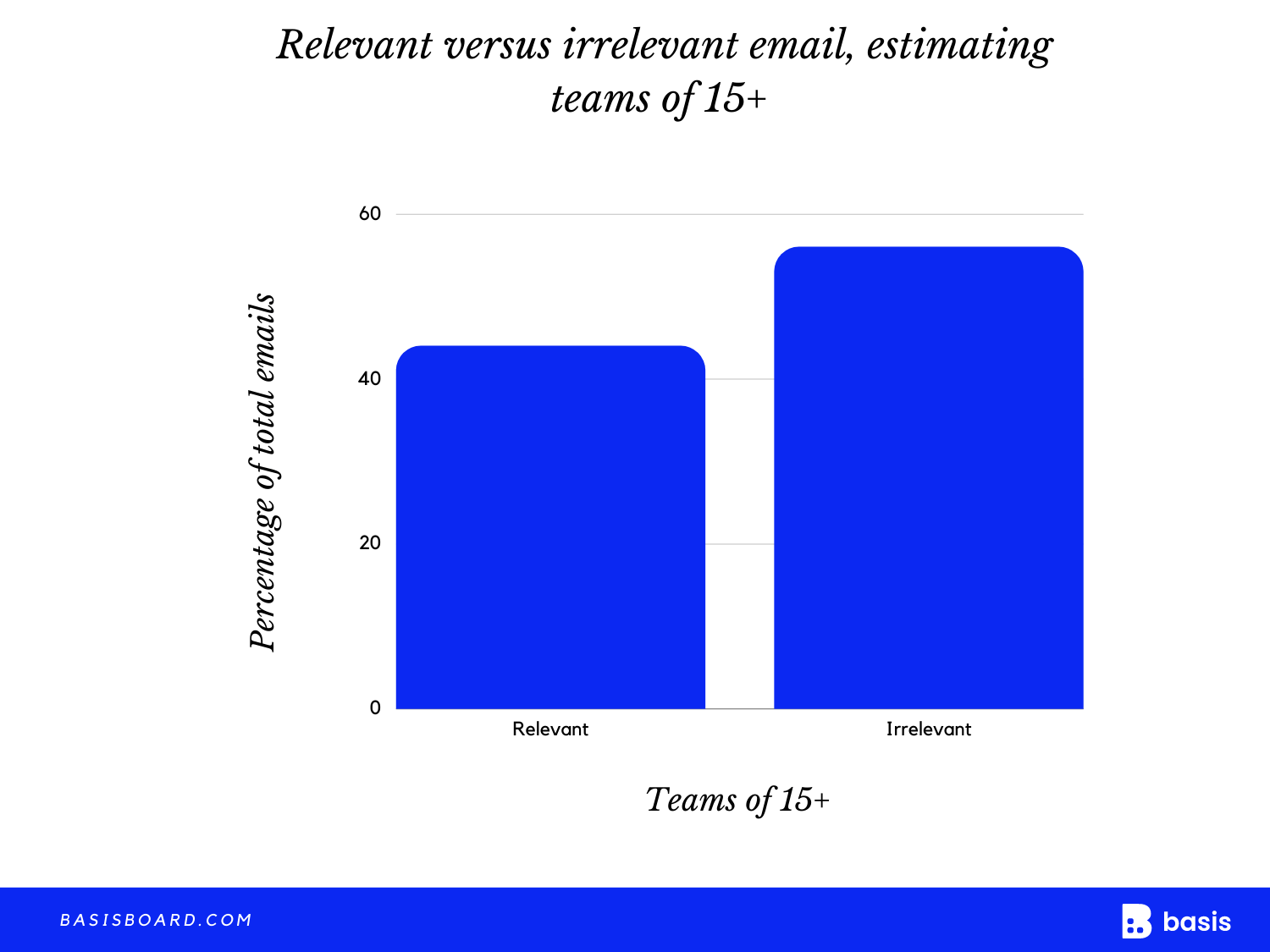
The takeaway is that nearly 50% of emails contribute to 0 revenue. What's worse, the chief estimator (i.e. most valuable person in estimating) is spending an inordinate amount of time triaging and deleting these irrelevant emails.
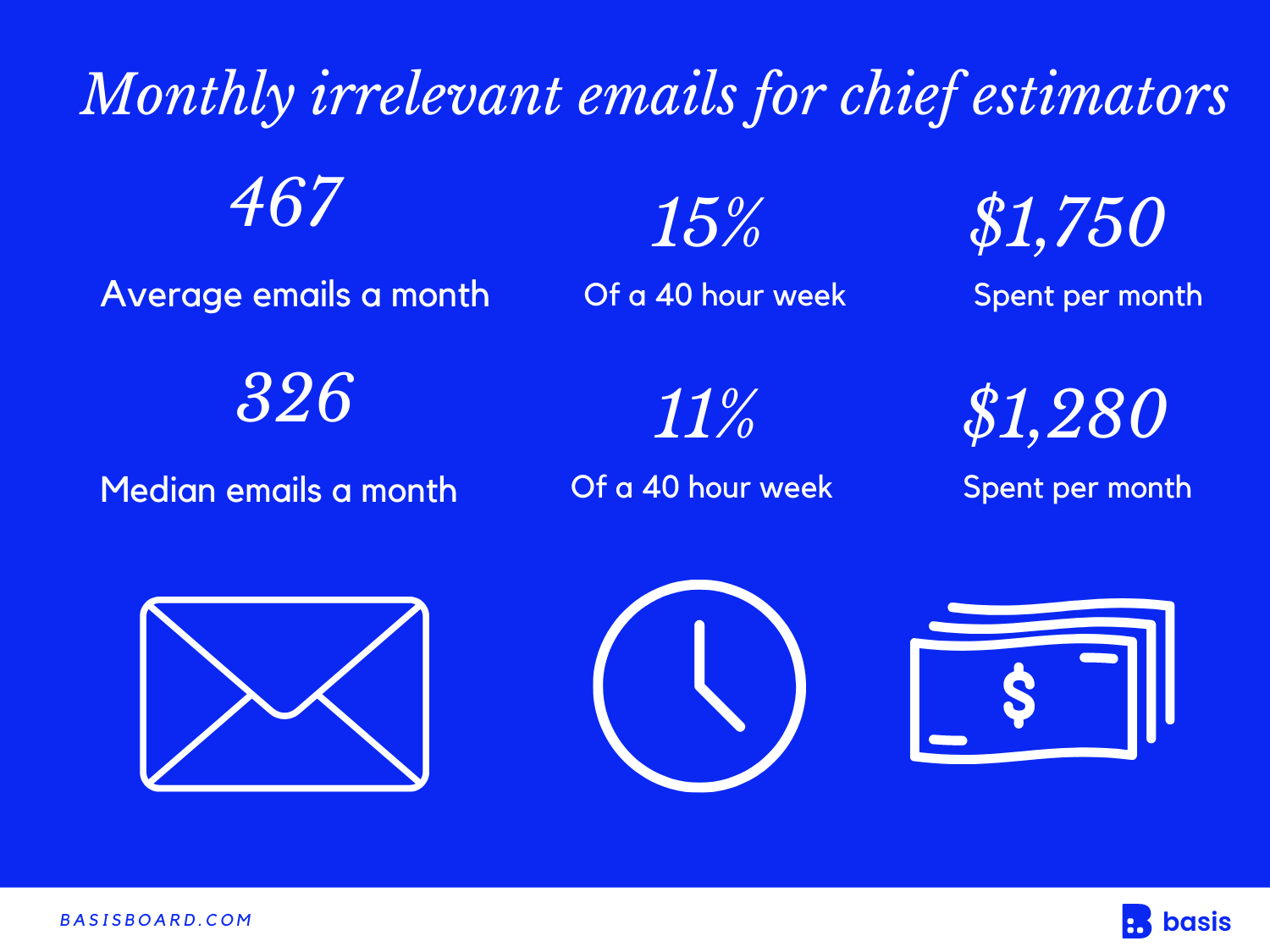 Based on an average team size of 8, with the chief estimator receiving an annual salary of $140,000
Based on an average team size of 8, with the chief estimator receiving an annual salary of $140,000
🗄️ Section 5: Why We Can't Solve This
Is there a world where subcontractors can simply ignore the irrelevant emails and free up that time to focus on higher-leverage tasks as opposed to low-leverage tasks?
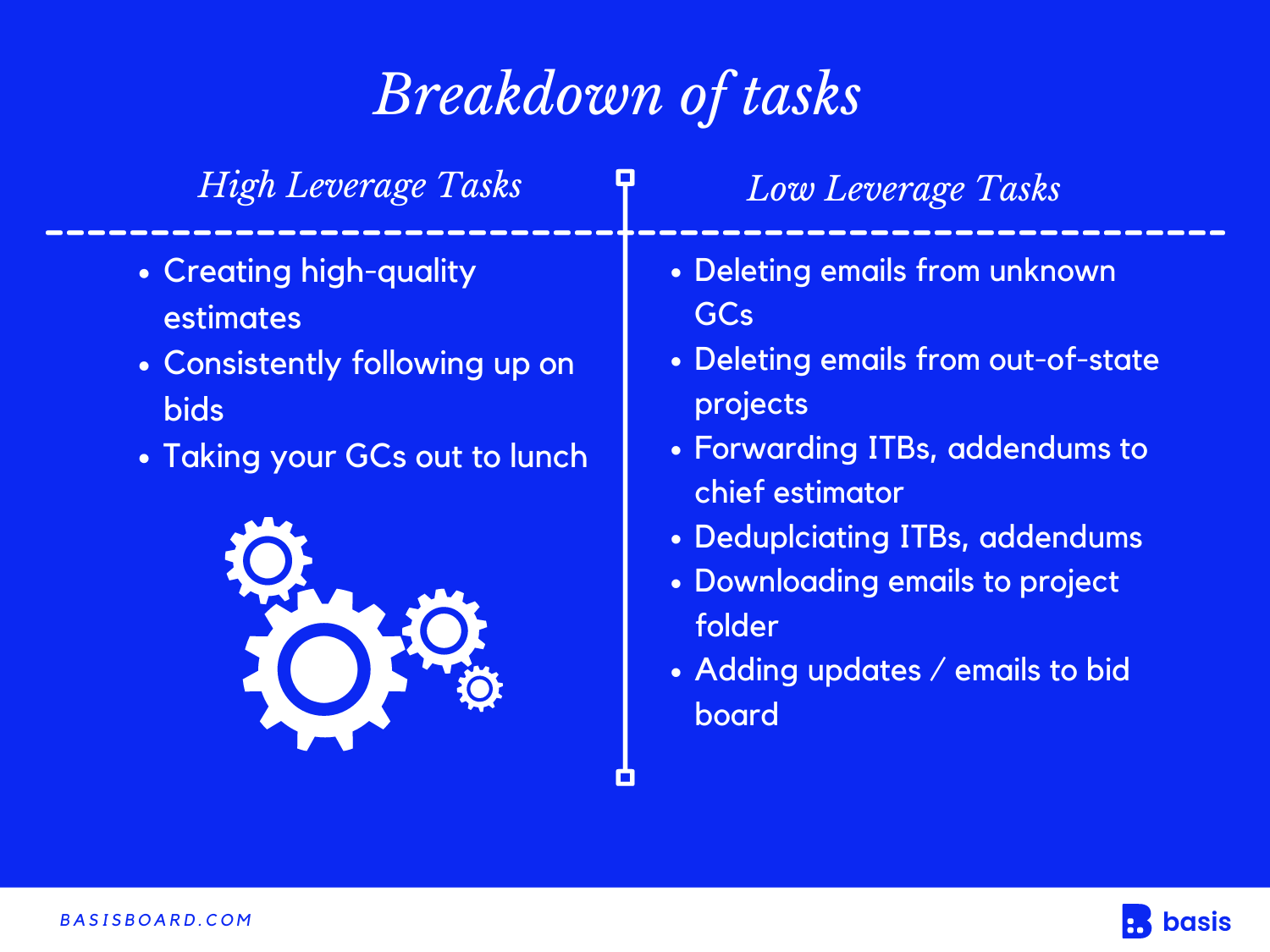
Most subcontractors try to solve this problem by hiring a bid-coordinator to do the organization or asking everyone to forward emails to an estimating@ inbox. Unfortunately, these methods are bandaids not solutions. This is because the number of irrelevant emails stays the same and the number of actions that must be taken on those irrelevant emails is also the same (reading, forwarding, deleting, adding to bid board). The only way to solve this problem is to give an assistant access to your inbox and have him/her clean up your inbox so you only see relevant emails. Then, have this assistant do that for estimators, chief estimators, project managers and the CEO at the company. Clearly, that's not feasible and it's the reason why email remains a challenge for the industry.
💻 Section 6: Automated Bid-Boards
The solution to this problem are automated bid boards like Downtobid's bid board, BuildingConnected, ConstructConnect.
First, they provide a way for subcontractors to collect all emails across every employee in the company into one place and organize these emails by project. This is the equivalent of sending all emails to the chief estimator or estimating@ inbox. A subcontractor needs this so no email slips through the cracks.
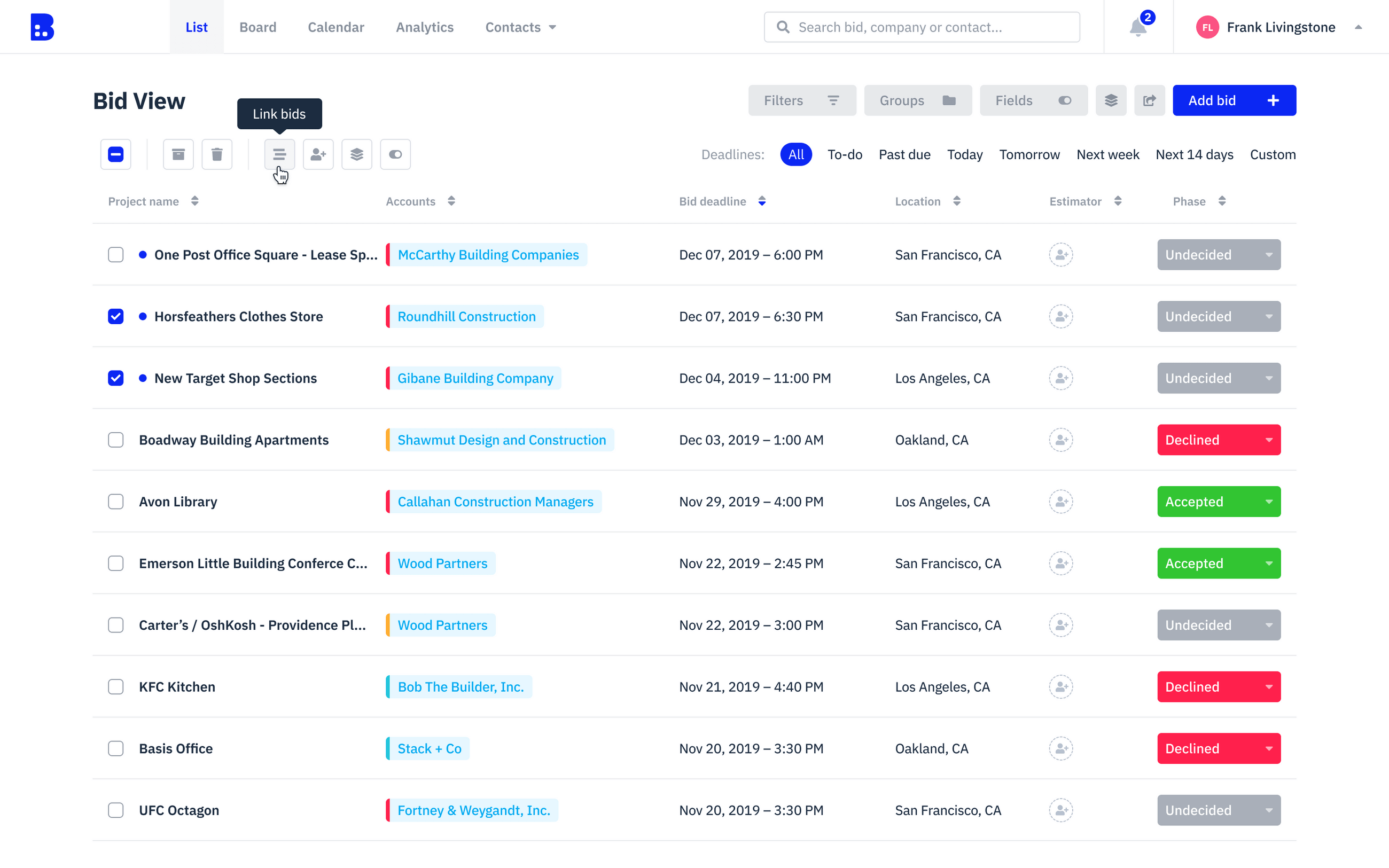 List view of a subcontractor's bids in BasisBoard
List view of a subcontractor's bids in BasisBoard
Second, automated bid boards use software to classify and direct emails to the right projects. Here is an example of a project where all ITBs, addendums and updates are neatly organized. As such, the work for chief estimators shifts from triaging emails to simply reviewing bids after software has done the triage.
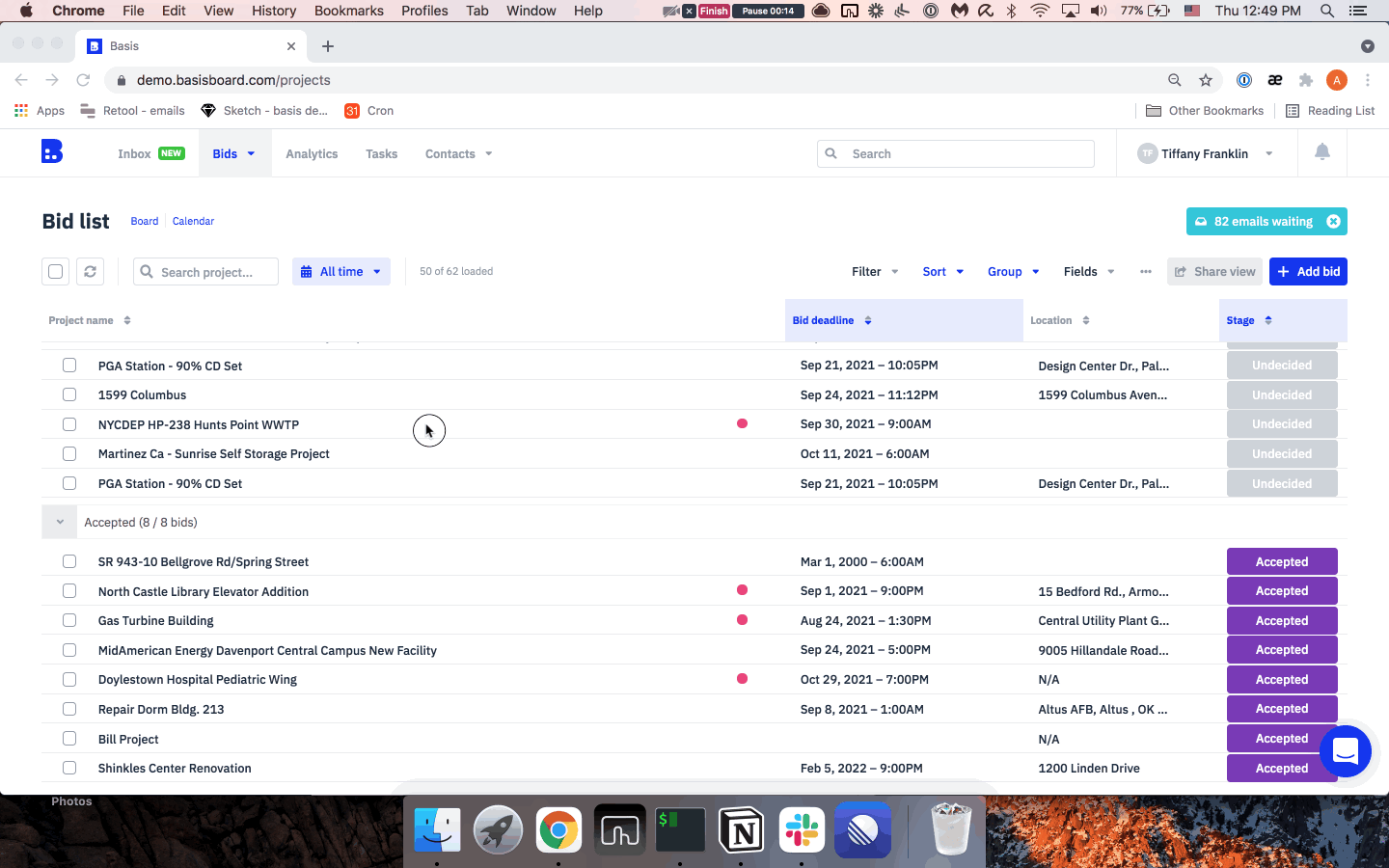
A project inside BasisBoard with neatly organized ITBs, addendums, and updates When implemented correctly, the impact is two-fold.
- Chief estimators eliminate the need to read and delete irrelevant emails
- Chief estimators eliminate the need to triage emails for active jobs
We estimate this load to be an 80% reduction in triaging emails, which is time that can be re-invested in building relationships with GCs and coaching estimators on the team.
Footnote: Relevant versus Irrelevant Emails This analysis isn't 100% accurate because there might be a few jobs that are actually a great-fit but a sub didn't have the resources to bid on. However, this only represents a small % of irrelevant jobs. We plan to perform a more thorough analysis in a follow up study.